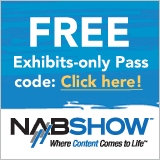
|
NRSC Adopts Updated RBDS Standard 
The Radio Data System (RDS) FM subcarrier-based data broadcasting Standard was first introduced in Europe in 1984 and its continuing, widespread usage and relevancy is a testament to its robust and forward-looking design (see the July 12, 2010 issue of Radio TechCheck for additional background information on RDS). Last Saturday, the National Radio Systems Committee (NRSC) adopted an update to the U.S. version of the Standard (called “RBDS,” for Radio Broadcast Data System). Notably, this new version includes support for the latest “RadioText+” technology, some new Program Type (“PTY”) codes which better reflect new programming choices available to listeners and a new, optional method for Program Information (“PI”) code generation. NRSC-4-B, United States RBDS Standard – Specification of the Radio Broadcast Data System (RBDS), was adopted by the Radio Broadcast Data System (RBDS) Subcommittee at the April 9, 2011 meeting of the group, held in conjunction with the 2011 NAB Show. The Subcommittee is chaired by Barry Thomas, vice president of engineering, radio, Lincoln Financial Media. This latest version of the Standard was developed by the subcommittee’s RDS Usage Working Group (RUWG), chaired by Steve Davis, senior vice president, engineering and capital management, Clear Channel Broadcasting, Inc. Also providing input was the RDS Forum, an industry-sponsored organization based in Europe responsible for maintaining the RDS Standard (designated IEC 62106). NRSC-4-B includes only those sections which differ from the European version of the Standard, IEC 62106, Specification of the Radio Data System (RDS) for VHF/FM sound broadcasting in the frequency range from 87.5 to 108.0 MHz. This is a departure from previous versions of the NRSC Standard (NRSC-4-B is the fourth NRSC version) which included nearly all of the text from the IEC version except for a few, important modifications specific to the U.S. version. This new approach will simplify design and development of compatible devices by transmission equipment and receiver manufacturers since it will now be much easier to see what the differences are between the U.S. and European versions. Since manufacturers of RDS-enabled devices typically serve both markets, this is expected to be a welcome change. Some of the most important changes in the NRSC-4-B Standard include the following:
The updated Standard will be available free-of-charge on the NRSC's website, following a final, procedural review which will take approximately two weeks. Additional information about the NRSC, including information on becoming a member, is also available on the website. With the update to the Standard completed, the RUWG is now turning attention to the development of an RDS Usage Guideline – please contact David Layer, senior director, advanced engineering with NAB Science and Technology if you would like to be involved in this important work. |
|
The Federal Communications Commission (FCC) is conducting a session for consultants on Tuesday, June 21, 2011 at their headquarters in Washington, DC on Communications Towers and Environmental/Historic Preservation Compliance. Training will be provided by staff from the FCC, USDA Rural Utilities Service, NTIA, FEMA and the Advisory Council on Historic Preservation. For additional information contact Steve DelSordo and to register contact James Swartz who are both at the FCC. To attend the session you must preregister.
|



